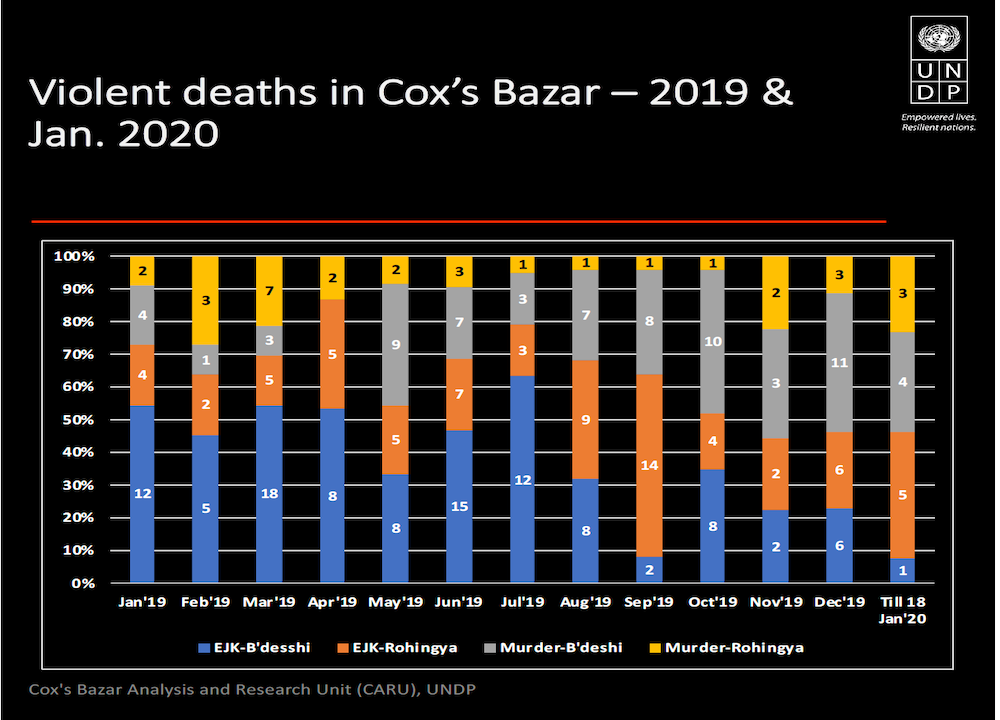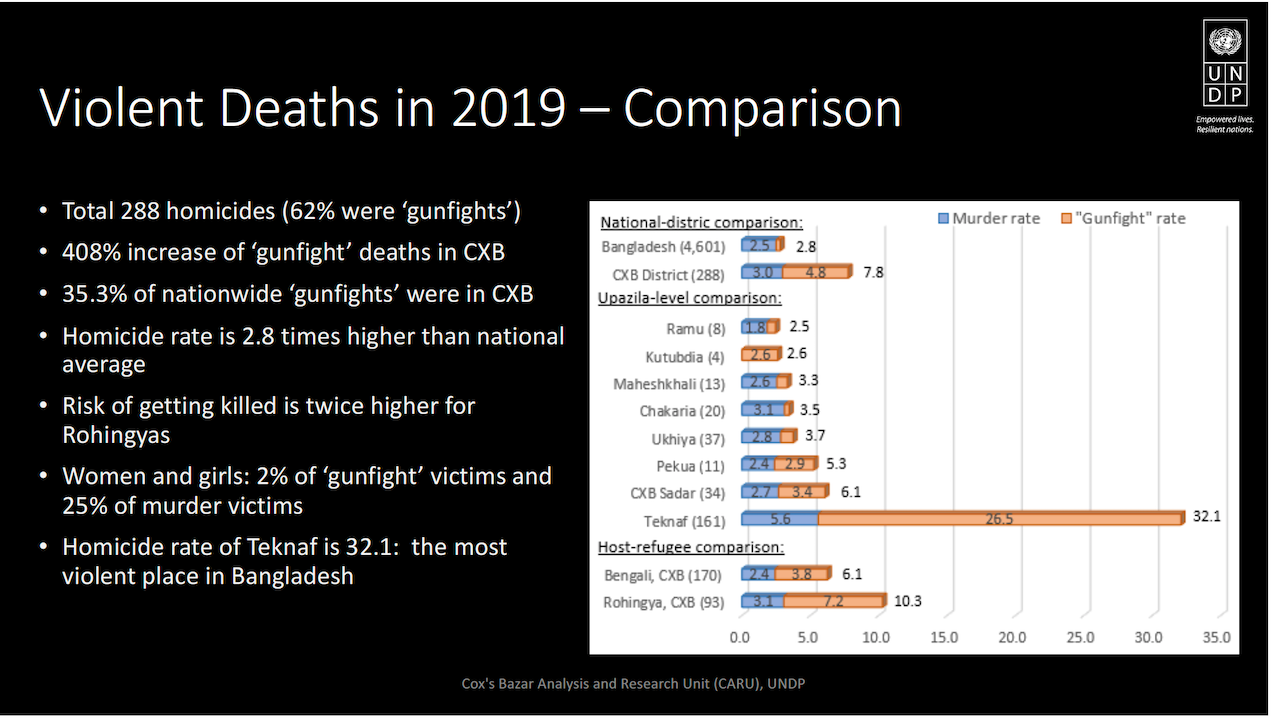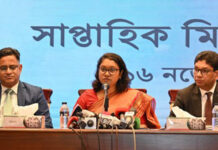Revealed: “The Most violent place in Bangladesh”

Data and analysis compiled by the United Nations Development Programme (UNDP) vividly illustrates the very high levels of murder and killings in the Bangladesh district of Cox’s Bazaar and in particular within the locality of Teknaf described as “the most violent place in Bangladesh.”
In particular it shows that the main perpetrators of the high levels of killings in these areas were not local people — whether Bengali or Rohingya — but law enforcement authorities responsible for “extra judicial killings” which comprise the majority of the deaths.
It also points out how Rohingyas, who live in camps in the district, were much more likely to be victims of a killing than local Bengalis.
The analysis, written up in a power point presentation titled “Context Analysis Cox’s Bazar in Perspective,” is authored by Michael von Tangen Page, Head of Unit at Cox’s Bazar Analysis and Research Unit (CARU) at UNDP. The presentation states that the information is drawn from “open source media reports” and the analysis contained “does not represent the views of the United Nations Organisation.” It was presented at the beginning of 2020.
Whilst there is nothing new in the data itself, the analysis is original as it separates out and compares law enforcement killings with civilian murders within the district, as well as comparing the rates of the two kinds of killing with national averages.
It comes as the former police officer-in-charge of Teknaf, Pradeep Kumar Das and other local officers were remanded in jail in September 2020 after being accused of involvement in the murder of a retired army major Sinha Rashed Khan. Das also faces allegations of involvement in many other extra judicial killings. Netra News had earlier revealed that Das, in a series of speeches, admitted to his involvement in cross fire killings, torture and house-burning.
In 2019, the document states, there was a total of 288 killings in Cox’s bazaar — a homicide rate of 78 per million people which is nearly three times higher than the national average of 28 per million. (The rates in the slides are given “per 100,000” of population per year which in this text is changed to “per million”.)
However, 178 of these killings — equivalent to over 60% of the total in the district — were caused by law enforcement ‘gunfights’, which the report also refers to as ‘EJKs’ an acronym for extra-judicial killings. The remaining 110 killings involve murders in a non-law enforcement setting.
In fact the high rate of violent deaths in Cox’s Bazaar is solely due to the law enforcement’s extra-judicial killings; according to the UNDP document, the rate of civilian murders in Cox’s Bazaar is about the same as the country’s average (30 per million people in the district compared to 25 per million in the country) whilst the rate of extra-judicial killings in Cox’s bazaar is 16 times the national average (48 per million compared to a rate of 3 per million people in the rest of the country).

The analysis also showed the extraordinary high level of extra judicial killings in Teknaf, an upazilla within Cox’s Bazaar— a rate of 265 killings per million people which is 88 times the country average of 3 per million. This data resulted in the report stating that Teknaf was “the most violent place in Bangladesh”
In some upazilla’s in Cox’s Bazaar, the only killings in 2019 were from extra-judicial killings by state bodies. An example is Kutubdia where there were four EJKs and no other murders.
However, whilst the average rate of civilian murders in Cox’s Bazaar and the country was similar, the rate of civilian murders in Teknaf was twice the average in the country 56 per million compared to 25 per million.

Last week, gang violence erupted in one of the Rohingya camps killing seven people. Whilst this incident got significant media attention, the UN analysis suggests that it is much more likely that perpetrators of killings in Cox’s Bazaar are law enforcement officers.
The report also provides information on the ethnicity of 277 of the murdered victims in Cox’s Bazaar with 102 of them being Rohingya and 175 Bangladeshi. Looking at the respective size of populations of Rohingya and Bengalis in Cox’s Bazaar, a Rohingya person was nearly twice as likely to be killed in law enforcement “gunfights” than a Bengali.
Indeed over twice as many Rohingyas were killed in an extra-judicial killing (71) than in other kinds of murders (31).
Netra News has previously written about widespread fears of Rohingyas that they might be killed by the Bangladesh authorities if they were put into isolation or quarantine as part of minimising the risk of Covid-19 virus transmission.
//DB









